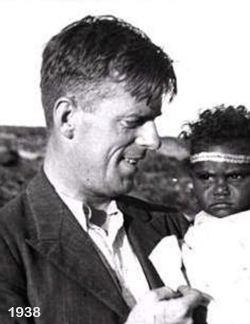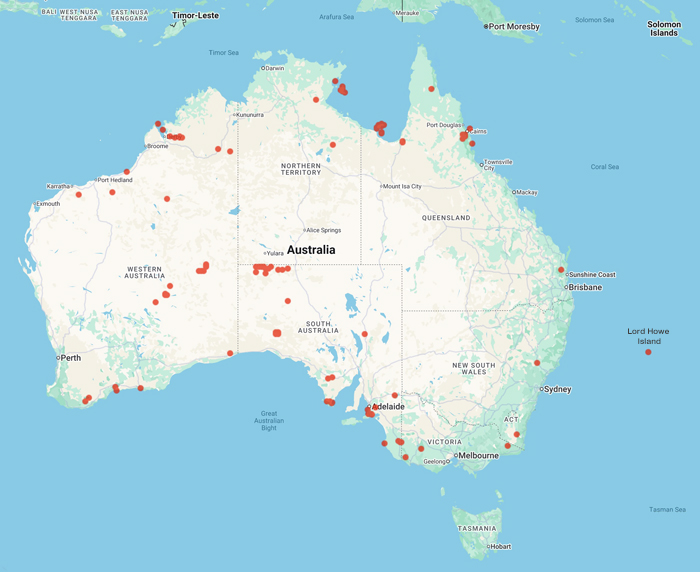
Council of Heads of Australasian Herbaria
Australian National Herbarium
Biographical Notes
 |
Council of Heads of Australasian Herbaria |
 Tindale, Norman Barnett (1900 - 1993)
Tindale, Norman Barnett (1900 - 1993)He was born on 12 October 1900 in Perth, WA; he died in Palo Alto, California USA on 19 November 1993, aged 93.
His family moved to Tokyo and lived there from 1907 to 1915, where his father worked as an accountant at the Salvation Army mission in Japan. Norman attended the American School in Japan.
The family returned to Perth in August 1917, and soon after moved to Adelaide, SA, where Tindale took up a position as a library cadet at the Adelaide Public Library.
In 1919, he began work as an entomologist at the South Australian Museum.
From his early years, he had acquired the habit of taking notes on everything he observed, and cross-indexing them before going to sleep, a practice which he continued throughout his life.
Shortly after this, Tindale lost the sight in one eye in an acetylene gas explosion which occurred while assisting his father with photographic processing.
He had already published thirty-one papers on entomological, ornithological and anthropological subjects before receiving his Bachelor of Science degree at the University of Adelaide in March 1933.
In 1938-39, Tindale teamed up with Joseph Birdsell, an anthropological graduate student from Harvard University, after meeting him on a 1936 visit to the US.They were to undertake an extensive anthropological survey of Aboriginal reserves and missions across Australia, and the relationship forged between the two developed into a half century of collaboration.
On the outbreak of World War 2, Tindale tried to enlist, but was rejected because of his poor eyesight. When Japan precipitated war with the USA however, Tindale's knowledge of Japanese, rare in Australia at the time, made him an asset for military intelligence. In 1942 Tindale joined the Royal Australian Air Force and, assigned the rank of wing commander, he was transferred to The Pentagon, USA, where he worked with the Strategic Bombing Survey as an analyst for estimating the impact of bombing on the military and civilian population of Japan.
Tindale's vast collection, held at the South Australian Museum, is made up of genealogical information about Aboriginal communities throughout Australia, journals, papers, sound and film recordings, drawings, maps, photographs, vocabularies and personal correspondence.
A tall, energetic man with blue eyes and a 'boyish sense of humour', Tindale was known to friends and colleagues as 'Tinny'.
He spent more than seven years of his professional career in the field and, following his retirement from the South Australian Museum in 1965, he continued his fieldwork in Western Australia with the American anthropologist and folklorist John Greenway.
He moved to the United States in 1965 take up a teaching position at the University of Colorado and remained in the United States until his death, aged 93, in Palo Alto, California on 19 November 1993.
Source: Extracted from:
https://en.wikipedia.org/wiki/Norman_Tindale
https://adb.anu.edu.au/biography/tindale-norman-barnett-29608
Portrait Photo: 1938, extracted from Wikipedia entry above.
Data from 868 herbarium specimens
